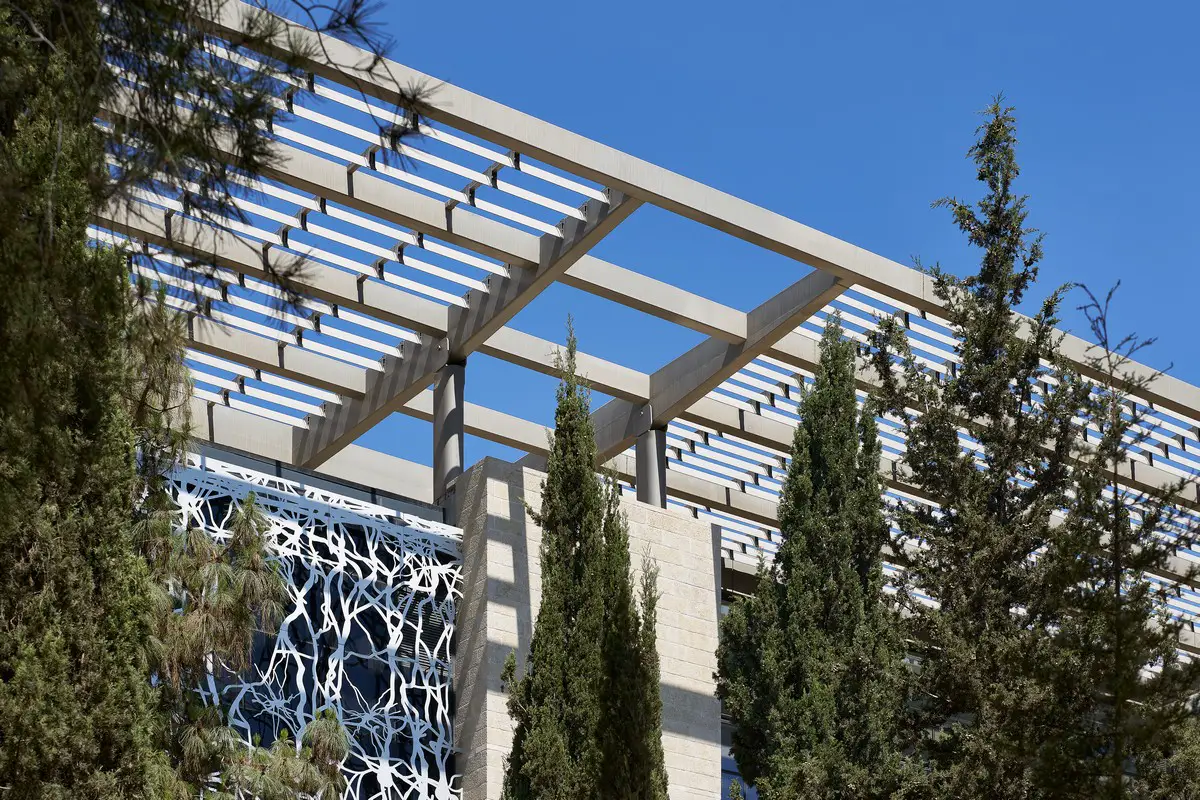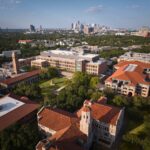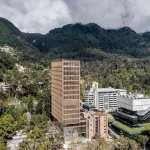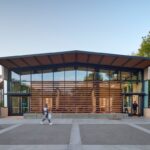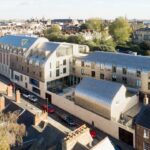Edmond and Lily Safra Center for Brain Sciences Jerusalem, Modern Israeli Architecture Photos
Edmond and Lily Safra Center for Brain Sciences, Jerusalem
11 August 2021
Design: Foster + Partners
Location: Hebrew University of Jerusalem, Israel
Exterior view of The Edmond and Lily Safra Center for Brain Sciences:
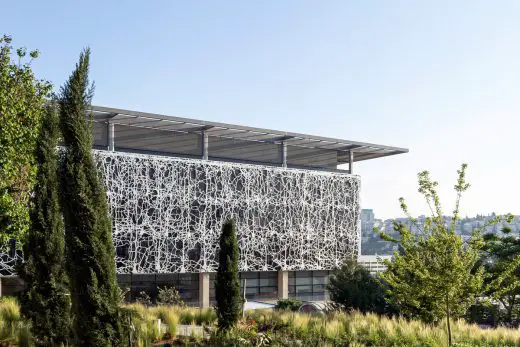
Photos by Studio Harel Gilboa
Edmond and Lily Safra Center for Brain Sciences in Jerusalem
Inspired by science – Edmond and Lily Safra Center for Brain Sciences in Jerusalem
Close up of the facade and canopy detail:
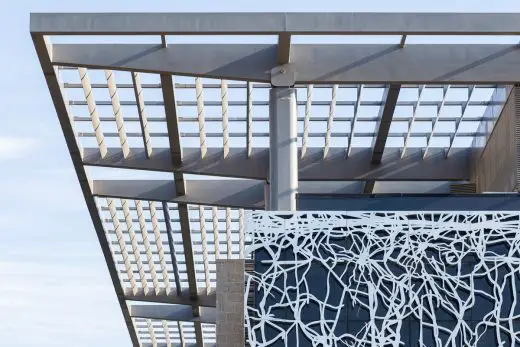
Situated in the heart of the Hebrew University of Jerusalem, the Edmond and Lily Safra Center for Brain Sciences is a pioneering research facility for the scientific exploration of the brain. It has been carefully sited amid the natural rugged setting of the campus. Once the new tram link to the city center is opened, the building will act as a gateway to the university – its dynamic social spaces and laboratory facilities are designed to attract exceptional scientists, as well as to foster an interest in the center’s research activities within the wider community.
View of interior courtyard with the indoor trees. The building is arranged as two parallel wings around this central courtyard:
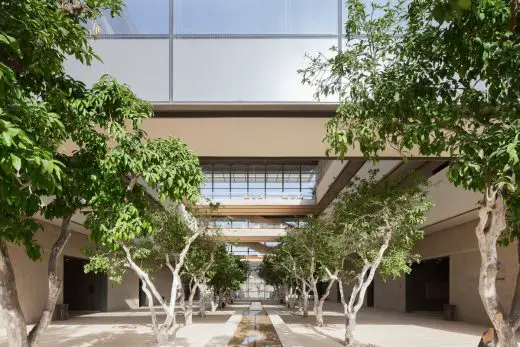
Spencer de Grey, Head of Design, Foster + Partners, said: “Understanding the enigma of the brain is the most challenging endeavor of the 21st century and research in this area is vital to the quality of life for millions of people. This is one of the most innovative projects of its kind at an Israeli university, with several laboratory complexes that are highly flexible to anticipate and accommodate future change, arranged around an open central courtyard that is at the heart of the scheme.”
View of interior courtyard, which establishes new circulation routes through the campus and draws the greenery of the surrounding landscape into the building:
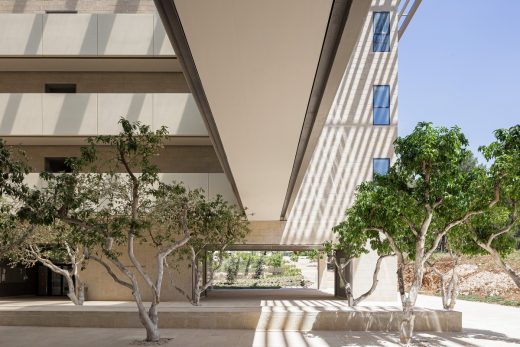
The retractable ETFE roof helps modulate the microclimate of the courtyard, creating a quiet, reflective space at the heart of the building:
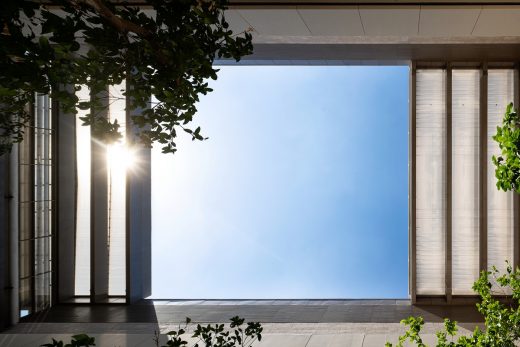
The building is arranged as two parallel wings around this central courtyard. The upper levels house twenty-eight highly flexible laboratories linked by social hubs, which are conceived to encourage informal interaction and the exchange of ideas between students and staff.
View of the courtyard as it flows through the building at ground level:
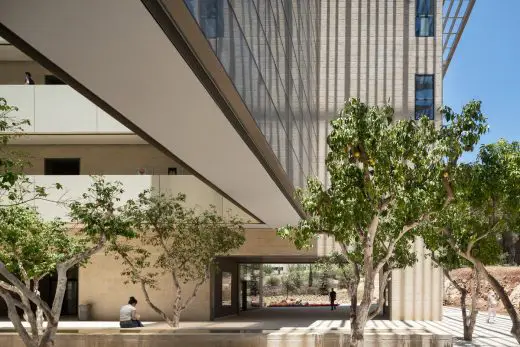
View of the social hub on the upper level. The laboratories are linked by social spaces that encourage interaction between students and staff:
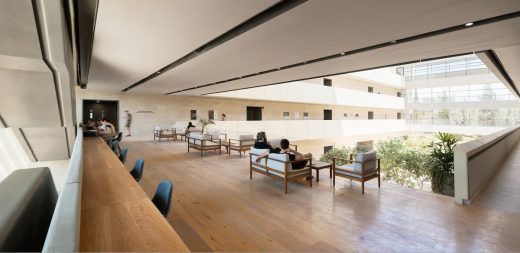
At ground floor, there are teaching facilities, a 200-seat auditorium, a library, café and a publicly accessible gallery for the display of art related to the brain. The courtyard at the heart of the scheme unites these different functions, establishes new circulation routes through the campus and draws the greenery of the surrounding landscape into the building. Planted with citrus trees and a man-made stream along its length, the courtyard forms a quiet, reflective space and a cool microclimate, which can be further mediated by a retractable ETFE roof.
Exterior view of The Edmond and Lily Safra Center for Brain Sciences. The upper three levels are shaded by a cast aluminium screen, with a non-repetitive representation of the early twentieth century drawings by Spanish neuroscientist, Santiago Ramon y Cajal, illustrating the neurological brain structure:
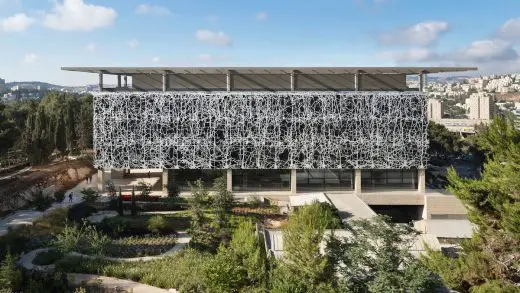
Close up of the facade and canopy detail:
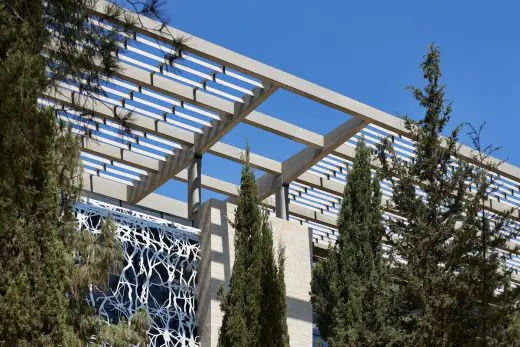
Darron Haylock, Partner, Foster + Partners, commented: “The project has a progressive social agenda that has been applied at an urban scale, creating a center for research and learning that is truly inclusive. The new building is located just off the main pedestrian spine of the University and its façade invites exploration, drawing people inside to learn about the research activities.”
Exterior view of The Edmond and Lily Safra Center for Brain Sciences. The building has been carefully sited amid its natural rugged setting:
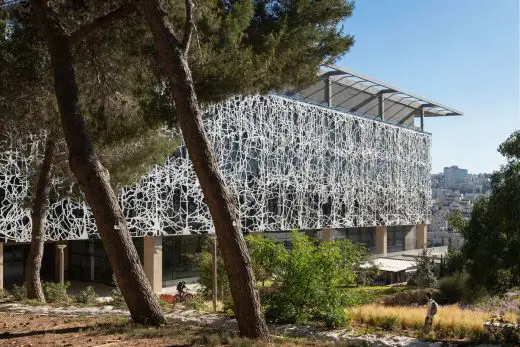
View of the courtyard as it flows through the building at ground level:
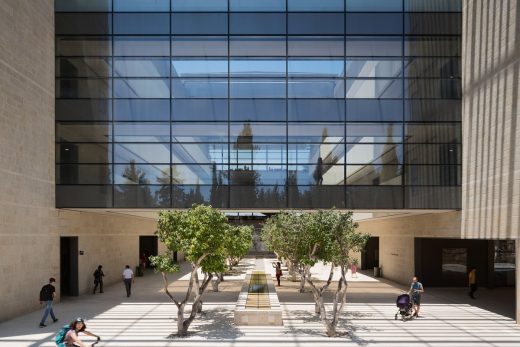
In the context of the ongoing Covid-19 pandemic, the building anticipated the importance of health and wellbeing with a design that is underpinned by the principles of biophilia. The central courtyard, open balconies and circulation all contribute towards a healthy research campus.
The dynamic social spaces are designed to attract exceptional scientists, as well as to foster an interest in the centre’s research activities within the wider community:
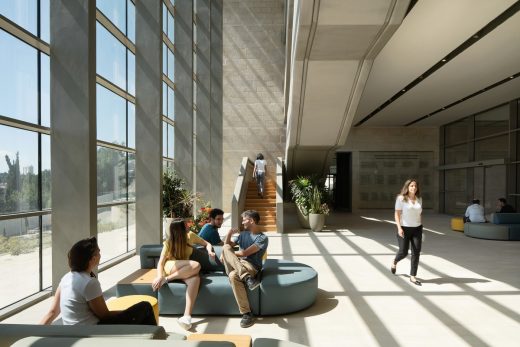
View of classroom with the verdant landscape in the background:
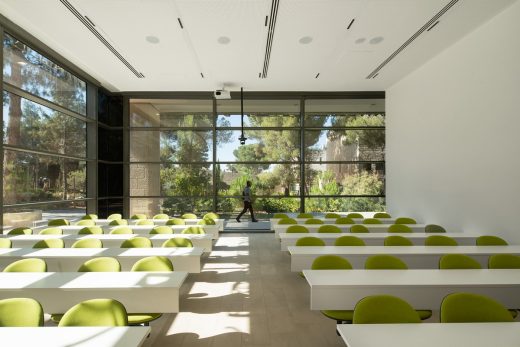
The center’s progressive environmental strategy makes use of passive techniques to naturally reduce energy use. Local materials, such as Jerusalem stone, are used where possible, and the building is orientated east-west to reduce solar gain.
The flexible workstations with the laser cut aluminium facade screen in the background:
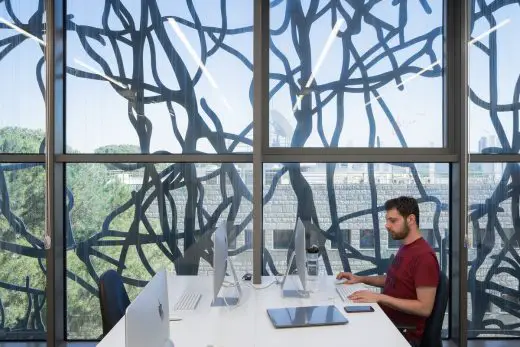
Musicians performing at the 200-seater auditorium:
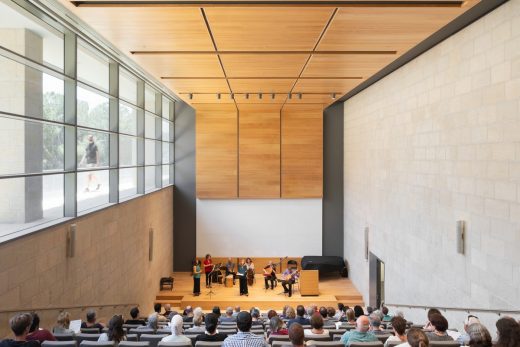
The upper three levels are shaded by a cast aluminum screen, with a non-repetitive representation of the early twentieth century drawings by Spanish neuroscientist, Santiago Ramon y Cajal, illustrating the neurological brain structure. Further passive cooling of the building is provided by translucent ETFE canopies to the west and east, which form distinctive markers for the main entrances.
Close up of laser cut facade screen. It comprises a cast aluminium screen, with a non-repetitive representation of the early twentieth century drawings by Spanish neuroscientist, Santiago Ramon y Cajal, illustrating the neurological brain structure:
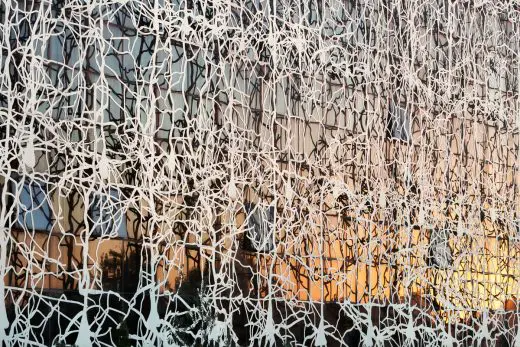
Exterior view. The building has been carefully sited amid the natural rugged setting of the campus:
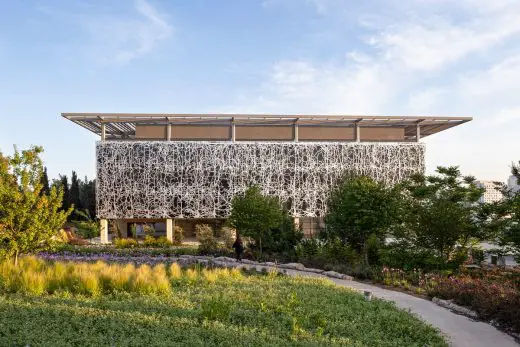
Edmond and Lily Safra Center for Brain Sciences in Jerusalem images / information received 110821 from Foster + Partners
Photos: Studio Harel Gilboa
Location: Jerusalem, Israel, Middle East
Israel Architecture Designs
Contemporary Israel Architectural Selection
Younes & Sorarya Nazarian Library, Haifa
Design: A.Lerman Architects Ltd.
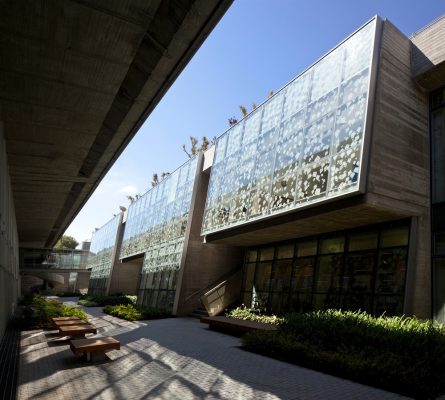
photograph : Amit Geron
Younes & Sorarya Nazarian Library, Haifa University
Jaffa House, Old Jaffa, Tel Aviv
Architects: Raz Melamed and Omer Danan
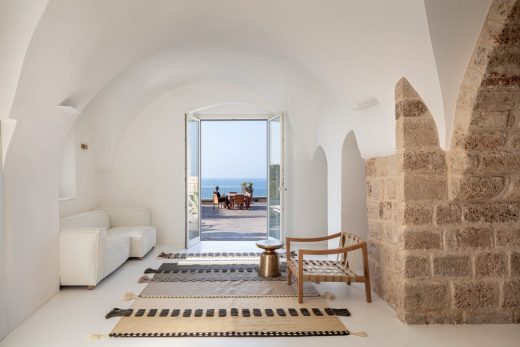
photo : Amit Geron Photographer
Jaffa House, Tel Aviv
Tel Aviv Architecture Tours by e-architect
Comments / photos for the Edmond and Lily Safra Center for Brain Sciences in Jerusalem building design by Foster + Partners Architects, London, UK, page welcome

